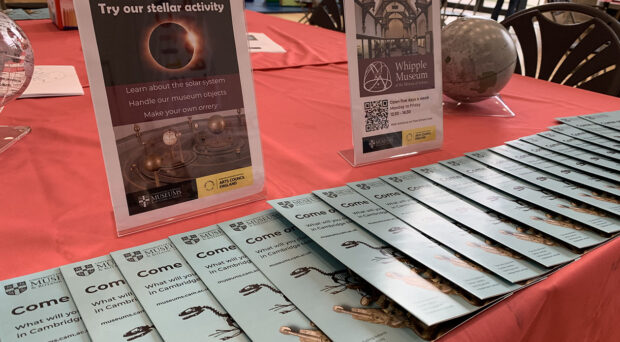Over a period of two weeks in September 2018, the Gortyn Law Code was taken down at the Museum of Classical Archaeology (MoCA).
The team tasked with the de-install were Kirstie Williams ACR, UCM Organics Conservator; Susanne Turner, Curator at MoCA; and Hannah Price, then Museum & Collections Assistant at MoCA.
What is the Gortyn Law Code?
The Gortyn Law Code, also known as the Great Code, is a legal code of the civil law in the ancient Greek city state of Gortyn in southern Crete. It exists in a fragmentary state, carved on a city wall. The inscription has been dated to the first half of the 5th century BCE. The Museum’s replica is made up of 93 individual plaster tablets which are arranged to make the code. The code is written in the Dorian dialect, and describes the agreements with matters of disputed ownership of slaves, adultery, the rights of a wife when divorced or a widow, inheritance, sale and mortgaging of property and so on. The code makes legal distinctions between the social classes (free, serf, slave and foreigner).

Why did it have to come down?
In the early 2000s the code was hung in a lecture theatre adjacent to the museum, where unfortunately wall movement, fluctuating temperatures and relative humidity have caused the 100+ year old casts to become unstable and unable to remain on the wall in its current location. This discovery of the casts’ declining condition conveniently coincides with the refurbishment of the lecture theatre. From taking down the code we have discovered at least three different mounting methods have been used to hang the code over its history: wooden split batons, metal rods set into the back of the casts and drilled holes to hang on screws in the walls.
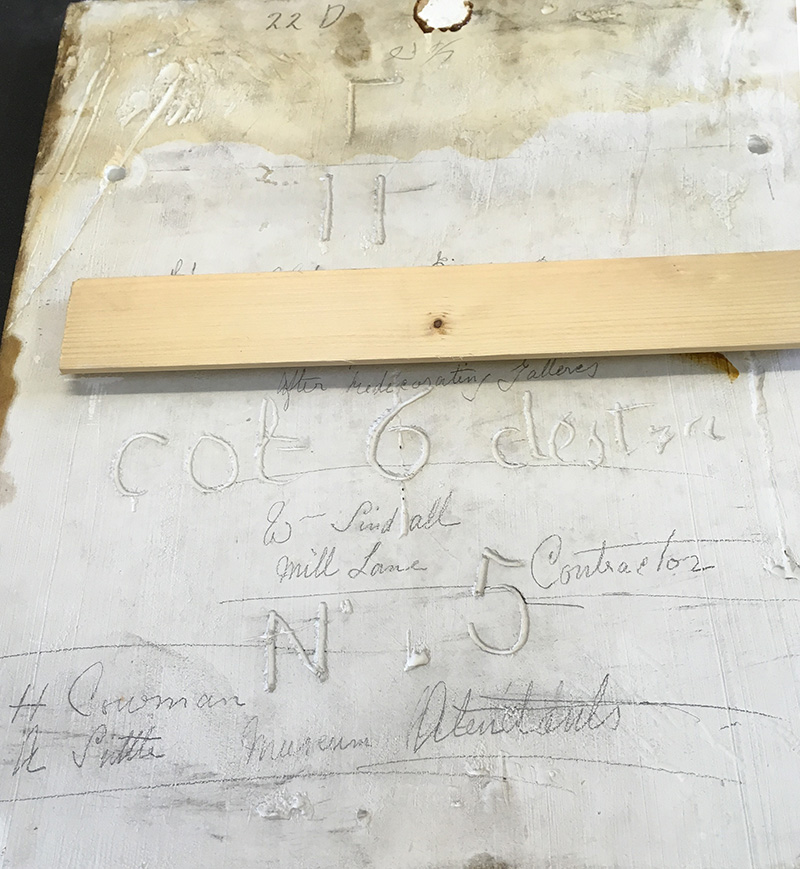
How did the code come down?
We set up two work stations to undertake the task.
Station One (manned by Susanne and Hannah): Removed the tablets from the wall, weighed and measured the casts, then ferried them individually to Station Two. (For those interested this racked up approximately 12,500 steps).
Station Two (manned by Kirstie): Photographed, metal-detected, assessed, documented and packed the casts for storage. Kirstie used 93 strips of Tyvek (totalling approximately 50 metres), 150 metres of cotton tape, and 186 cut pieces of plasterzote.
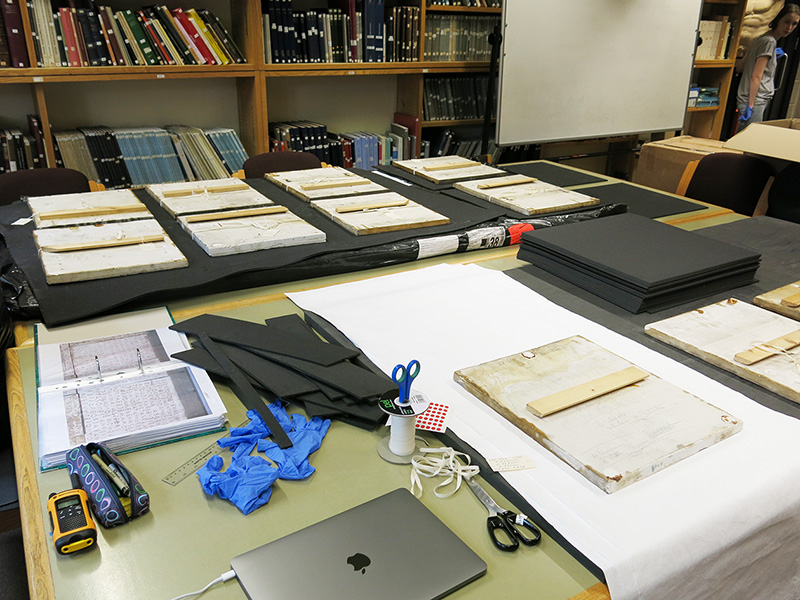
The casts are now stored across six shelves in two large and deep bookcases. Red dots were applied to the labels of the fragile tablets for quick identification.
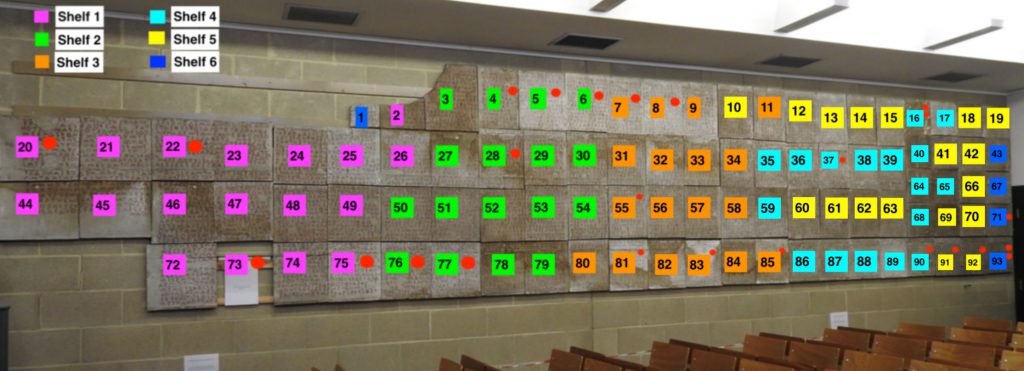
In total the casts weigh 326.9kg.
What happens next?
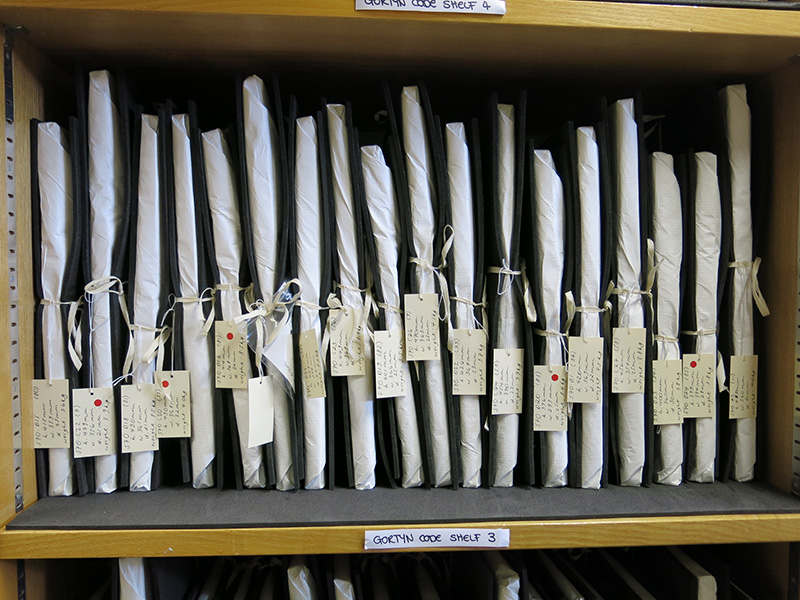
The code will go into storage for a while. Whilst there it will go to conservation to be cleaned, have the wooden batons removed and, in some cases, extensive repair. Then finally new bespoke mounts will be made before it is re-displayed in the future.







